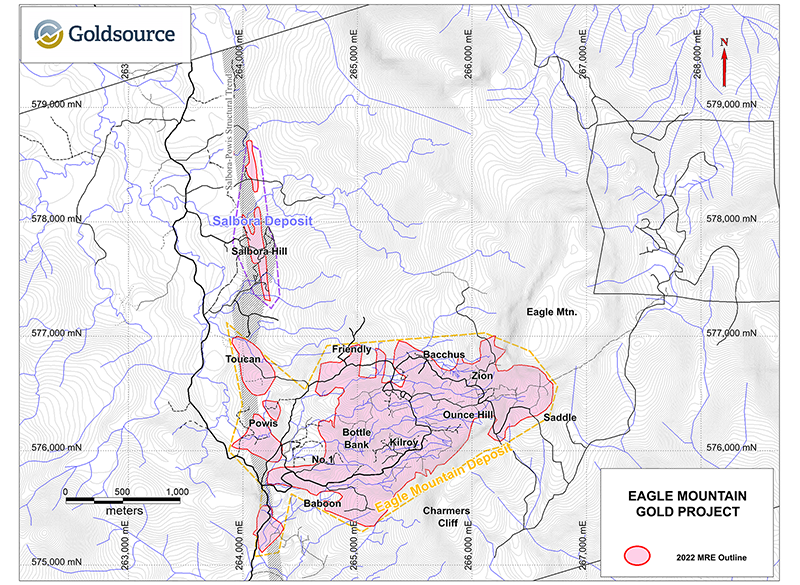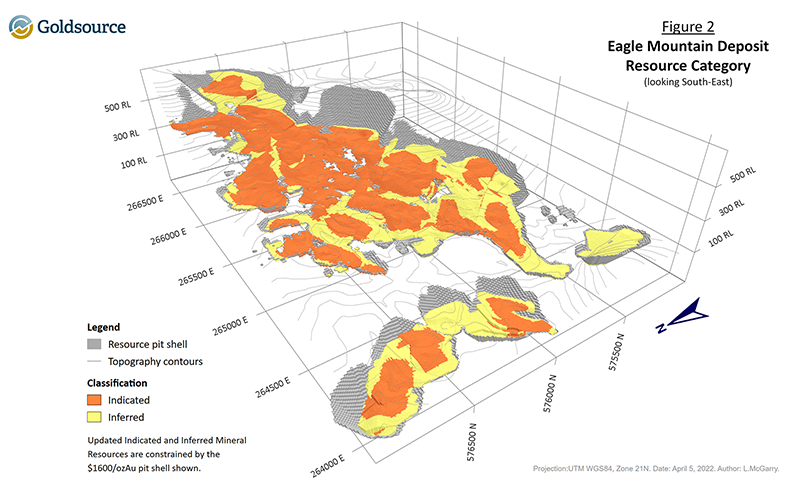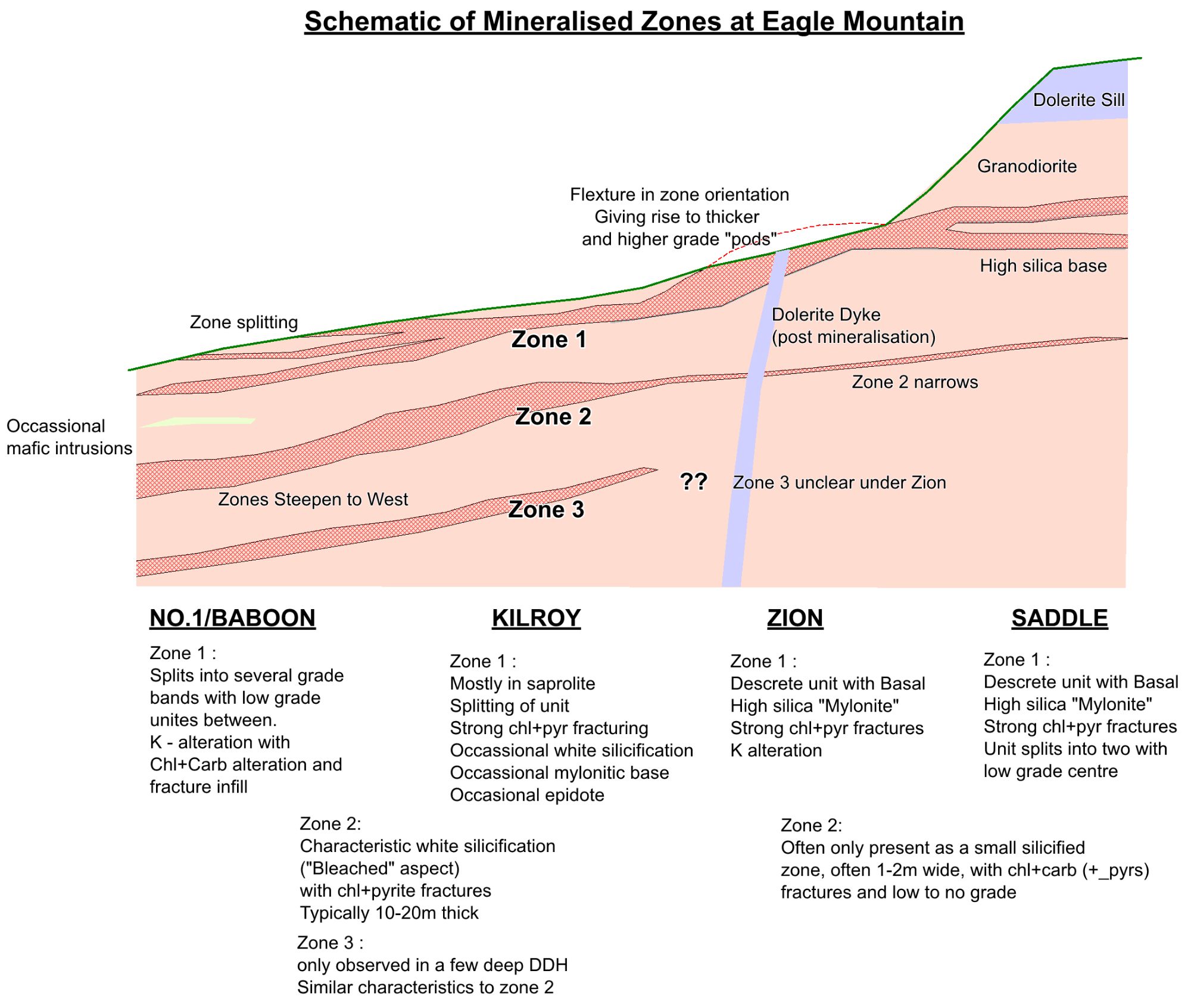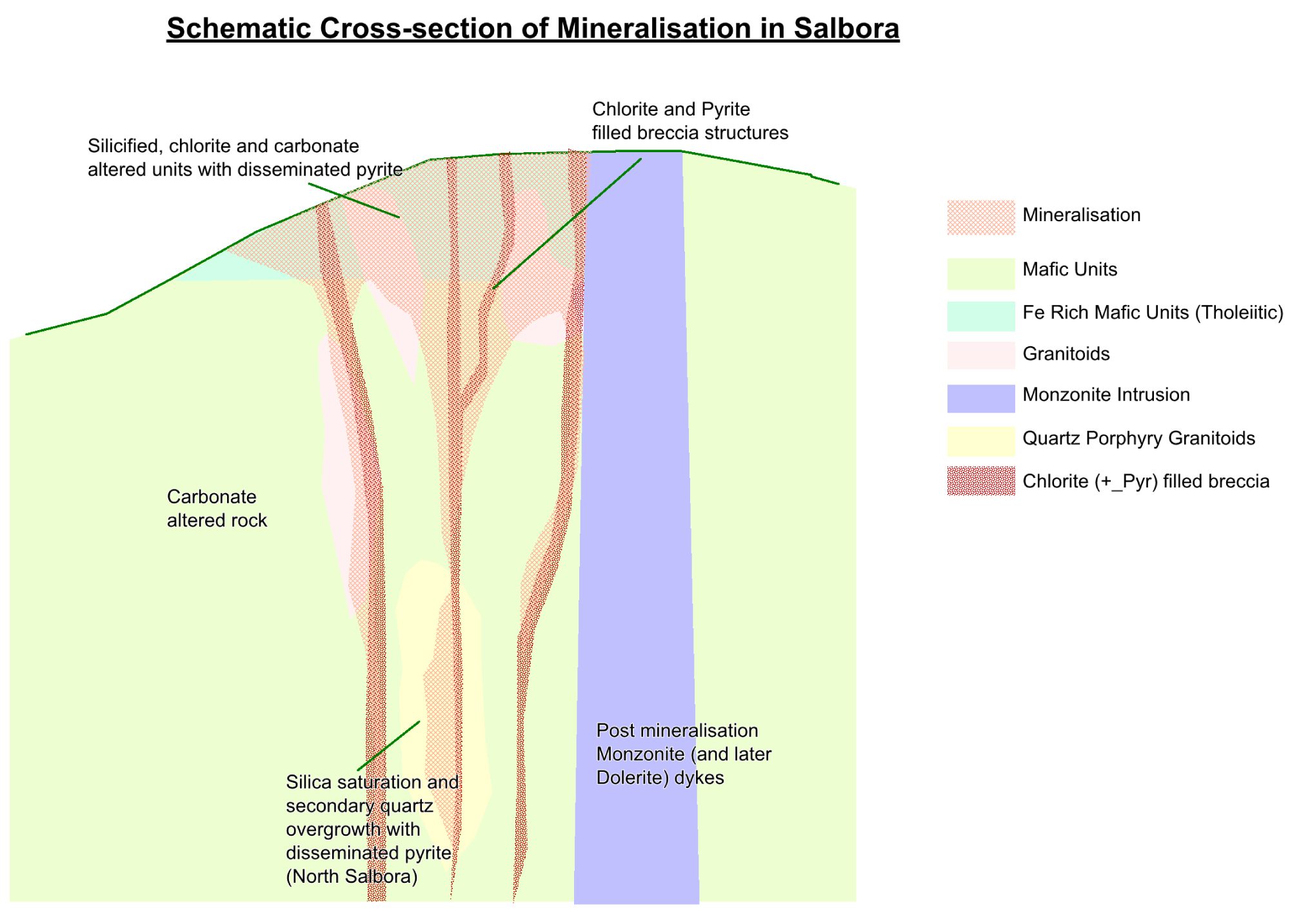Summary
The Eagle Mountain Gold Project, located in central Guyana, represents a cornerstone growth asset within Mako Mining’s expanding Americas portfolio. Acquired through the combination with Goldsource Mines Inc., Eagle Mountain adds a high-quality, low-capital-intensity development project with strong economics and district-scale exploration potential. The January 2024 Preliminary Economic Assessment outlined an after-tax IRR of 57% and an NPV (5%) of US$292 million at US$1,850/oz gold, based on a phased open-pit development plan with a projected 15-year mine life.
Mako plans to leverage its proven mine-building and operational expertise from San Albino to accelerate development at Eagle Mountain, optimize project design, and advance toward near-term production. The project is fully permitted for exploration and benefits from strong local infrastructure in a mining-friendly jurisdiction, positioning Eagle Mountain as a key driver of Mako’s future production growth and diversification.
Key Facts
| Location |
Guyana |
| Ownership |
100% |
| Claim Type |
Prospecting License |
| Metals |
Gold |
| Status/Stage |
PEA in progress |
| Mineral Resources: Indicated |
1,183,000 oz gold1 |
| Mineral Resources: Inferred |
582,000 oz gold1 |
The Property is located approximately 7 km south of Mahdia Township (population ~3000). Mahdia can be accessed by road from Georgetown, a driving distance of ~325 km, or via air with a commercial flight.
Mahdia is a central mining location. Consequently, the local economy is dominated by small-scale mining activity and has a labour force and mechanical shops familiar with mining. Additionally, as capital of Potaro Region 8, the township offers a local hospital, school, shops, and a paved airstrip.
Unpaved roads and tracks from Mahdia provide access to and within the EMPL. Goldsource’s current field activities are supported by the 65-man exploration camp and offices on the Property.
Mineral Resources
MINERAL RESOURCE UPDATE AND CURRENT PROGRAM
- In April 2022, the Company delivered an updated Mineral Resource estimate (MRE Update) for the Eagle Mountain Project (Refer to the MRE Update news release, dated April 7, 2022).
- 31 million tonnes grading 1.18 gpt for 1,183,000 ounces of gold contained in Indicated Resources; and
- 18 million tonnes grading 0.98 gpt gold for 582,000 oz of gold in Inferred Resources.
- The MRE includes the Eagle Mountain and Salbora deposits as well as the earlier-stage Toucan and Powis prospects. Gold mineralization starts at surface in saprolite (soft weathered rock) with the base of the saprolite marked by a narrow transition zone (< 1 metre) and extends into the underlying fresh rock. Overall, the saprolite and transition contain 35% of the gold in Indicated Resource and 24% in Inferred Resource.
- The Indicated Resource, representing 67% of the gold in the Updated MRE, are laterally extensive and generally shallow. At the Eagle Mountain deposit the Indicated Resource extends from surface to a maximum depth of 150 metres and has an average depth of 35 metres. 75% of the Indicated Resource is within 50 metres of surface. At the Salbora deposit the Indicated Resource extends from surface to a maximum depth of 156 metres and has an average depth of 49 metres. 58% of the Indicated Resource is within 50 metres of the surface.
- Mineral resources, employing cut-off grades of 0.30 gpt gold for the saprolite and 0.50 gpt gold for the fresh rock, are contained within a conceptual open pit.
- The updated MRE is defined by a total of 772 core holes for 75,430 metres drilled up to December 31, 2021.
APRIL 2022 MINERAL RESOURCE UPDATE FOR THE EAGLE MOUNTAIN PROJECT
| Classification |
Tonnes (000 t) |
Gold (gpt) |
Ounces Au (oz) |
| Indicated |
| Saprolite & Transition |
12,500 |
1.04 |
417,000 |
| Fresh rock |
18,700 |
1.28 |
766,000 |
| Total |
31,100 |
1.18 |
1,183,000 |
| Inferred |
| Saprolite & Transition |
6,100 |
0.71 |
139,000 |
| Fresh rock |
12,300 |
1.12 |
443,000 |
| Total |
18,400 |
0.98 |
582,000 |

Leon McGarry (P.Geo.) of CSA Global is the independent Qualified Person for the April 2022 Mineral Resource estimate. The Company QP under NI 43-101 is N. Eric Fier, CPG, P.Eng, Executive Chairman for Goldsource.

Geology and Mineralization
The Eagle Mountain Project comprises two gold deposits, Eagle Mountain and Salbora, in addition to several other exploration targets. The deposits are structurally controlled and considered to be part of the same mineralizing system. They are affected by a zone of saprolitic weathering up to 50 metres thick and overprints earlier-formed mineralization in both the granodiorite and basalt but has not resulted in enrichment of gold in the saprolite horizon.
EAGLE MOUNTAIN DEPOSIT
- Gold mineralization at the Eagle Mountain deposit is associated with a series of tabular, sub-horizontal to shallowly dipping shear zones developed within a granodioritic host rock. The deposit is laterally extensive; the mineral resource outline extends over 2.5 kilometres by 1.0 kilometre. Zones 1 and 2 represent the majority of mineralization within the Eagle Mountain deposit, including the mineralization at surface and to shallow depths. Two additional zones (Zone 3 and the more substantive Zone 4), both stratigraphically below Zone 2, are partially included in the Eagle Mountain pit-constrained resource. While at depth, more of Zone 4 is included in the MRE Update downslope and to the west where Zone 4 is closer to surface.
- The mineral resource estimate for Eagle Mountain deposit also includes the Powis Prospect, which displays characteristics of shallowly dipping mineralized zones with higher-grade quartz veins, and the Toucan Prospect, which is at the western extents on the Eagle Mountain deposit, and whilst predominantly shallow-dipping, contains a component of Salbora-style steeply-dipping mineralization with increased silicification and mineralized breccias.

SALBORA DEPOSIT
- Gold mineralization at the Salbora deposit is associated with steeply dipping mineralized breccias that cross-cut shallow-dipping shear structures within silicified, chlorite and carbonate-altered basaltic and granitoid units on the margin of a monzonite intrusion. The mineralization is strongest within the upper 50 metres where there exist broader zones of alteration and deformation. The Salbora pit-constrained resource is characterized by a generally shallow, sub-horizontal lens of mineralization approximately 80 metres thick with the breccia zones supporting the pit-constrained mineral resource to a depth of 156 metres. The core of the Salbora deposit has a lateral extent of approximately 200 metres by 200 metres with additional smaller pits along one kilometre of strike.





